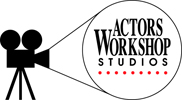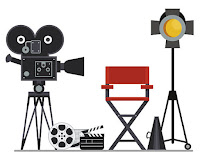Greetings, y’all!
Had such a fun time last class filming with you all – I hope you enjoyed it as well. Here’s a recap of what happened…
We began class (as is our custom) by reviewing the Coach’s Notes, and acknowledging those among us who are working on projects of late. We also briefly covered the fact that AWS is evolving as a studio – those who have been with us for a while have noticed some of the changes – there are more on the way! As students, your feedback is important to us. Leave a comment (or email/call directly) with your thoughts on what you like and dislike. We’re striving to make your learning experience with AWS as productive and enjoyable as possible.
We segued into our topic for the evening: The Art of Lying
Is Honesty Really the Best Policy?
As actors, we pretend for a living. We get paid to take someone else’s words/experiences and present them as our own, as convincingly as possible. The more genuine and honest (and present) we seem, the more effective we are in our performance. But make no mistake – Heath Ledger was NOT actually the Joker in the film The Dark Knight! That performance was a lie, in the clearest sense of the word – and a very effective one. That was not who Heath was in “real life”… he was lying!
We discussed the Art of the Lie in class, as it pertains to the acting craft – but we also discussed the numerous examples of lying in our day-to-day lives. Depending on which people we are around (friends/family/coworkers/strangers/etc) We modify our behavior, our demeanor, our words to fit the situation of the moment – usually motivated (without our being aware of it) by our objective at that moment. At any given moment during the day, we want something. And we go get it, however we need to. And often, just as we subconsciously craft a version of ourselves to fit the person/situation, we also craft a version of the truth that fits the moment – to obtain our objectives! Sometimes we tweak the truth just a bit, other times we outright lie.
This may seem an odd topic to cover in advanced acting class, but I assure you, if you can get a hold of this concept – and see it already at work in your lives – you will better understand how to bring the same dynamics into your acting. You character, itself, is a lie. And what your character does to get what he/she wants is often based on lies…
We discussed POLITICIANS. A politician’s “super-objective” is to get elected – so that he/she can be in a position of power, to DO things that will hopefully change society for the better (and/or enrich themselves in the process, lol). Getting elected, by necessity, requires winning votes. To win votes, you need to persuade voters to vote for you. Bottom line, politicians will say whatever they need to in order to win your vote. Becoming all things to all people, modifying their speeches to fit whatever crowd they are in front of, whether it contradicts other speeches or not. Little lies now, to gain a larger truth in the future (getting elected). (“Vote for Pedro, and all your wildest dreams will come true.”)
We discussed SPIES – the stakes could not be higher for a spy. In a foreign country, pretending to be someone “normal”, trying to obtain information to undermine that country. If they break character, even for a moment, it could cost them their lives. Talk about character creation and high stakes!
We talked about other liars: Criminals, lawyers, stand-up comedians, etc. I tried to get us to strip away the negative connotations of lying that we’re all pre-programmed with – not to make you all start actively lying, but to point out that we all do it already – and if you can understand the dynamics, you can apply it to your craft, and elevate your acting game.
We watched a pair of clips. The very first scene from the first episode of the TV show Lie To Me, starring the wonderful Tim Roth.
I hope you all see how useful understanding “micro-expressions” could be in crafting your performances. The camera sees those little details – and so will the audience. It will convince them on a gut, subconscious level. Trust me.
A good book on this topic is called Spy the Lie, by authors P. Houston and M. Floyd.
We also watched a clip from the TV show The Mentalist (starring Patrick Jane), in a “reveal” clip similar to the clip from Gotham we watched in a previous class.
This clip alone provides so much to talk about! That character actor Frederick Koehler is an actor, playing a character (Tommy) who is also playing a character. And Patrick Jane sees the lie (even though Tommy is very convincing – micro-expressions and everything), and calls him on it.
If you want an acting challenge, the next character you craft for a project of any kind, get into that character and go out in public as that character for a few hours. That will show you how good your craft prep work is!
We talked again about the skill you should all focus on developing – when to “be yourself” in a role, when to be a “version” of yourself, and when to be someone else altogether. Again, it depends on the project, the script, the director… if being yourself works, run with it! That’s what Felicia Pearson did as Snoop in the awesome TV series The Wire. Here is the clip I wanted to show you in class…
If you watch interview clips with Felicia, you can see that, in this role, she is being herself. Her line delivery, undercurrent, attitude, presentation. That’s her. Now, her actions are in the script – she’s a psychopath in the show, and a very convincing one. In an excellent show filled to the brim with fantastic characters, she shines. This is a great show to study, as far as craft.
We also talked about Boot Camp, drill instructors, improvising entire plays, and other odds and ends.
All of it was interesting to me. You’re actors. You lie for a living.
At this point, we shifted gears, and got to filming our scenes from Boardwalk Empire. This time, I brought some basic LED lights and my H1 field recorder, to up our end results. I also treated our shoots more like an actual set – getting master shots and coverage, to edit the scenes together more like a short film, instead of single long takes. I’ve imported all of the footage and have begun the editing process. I’ll add the clips to the end of this blog post, as soon as they’re done.
It will be interesting to learn how to streamline this whole process. We got 4 scenes done in about 90 minutes – that’s not fast enough. If we have bigger classes, on film nights, we’ll have to hit the ground running at the very beginning, and be able to work as a team (with lights/sound/etc). I enjoy the process so much, and I know many of you did as well. Those that weren’t with us filming on set were in the class proper with CJ, working on your monologues, cold reads, and watching a video of Daniel Day Lewis and his character work on There Will Be Blood – but I want to make sure that on film nights, everyone gets their time in front of the camera.
As the weeks progress, we’ll fine-tune the process.
Look for the clips from Boardwalk Empire down below very soon.
Until then, thank you all for your participation. Leave a comment with any feedback – including one of your favorite characters from TV/Film! I want to pick one of your favorites each week, and look into the craft choices that were made by the actor/actress in question. As per Adriana’s suggestion, first up will be Chris Pratt‘s work in the show Parks and Recreation.
See you soon!
David Wagner
AWS Staff
———————————-
CLASS VIDEOS: While it’s a step forward in production, as far as what we’ve done in the past, there’s room for improvement as far as lighting and sound, shot composition and coloring… Please be patient as we work and learn together!
Boardwalk Empire: Scene One:
Here’s the second scene. The sound is still choppy, I haven’t got the hang of working with the audio yet. Again, it’s a step in the right direction. We’ll get there.
Here’s the third of the four scenes. Again, inconsistent sound. I’m working on it!
Final video will post soon!


